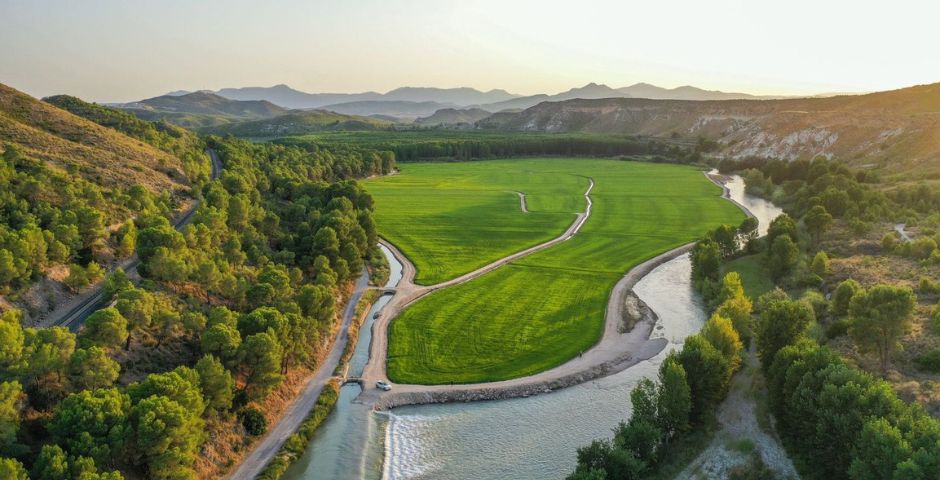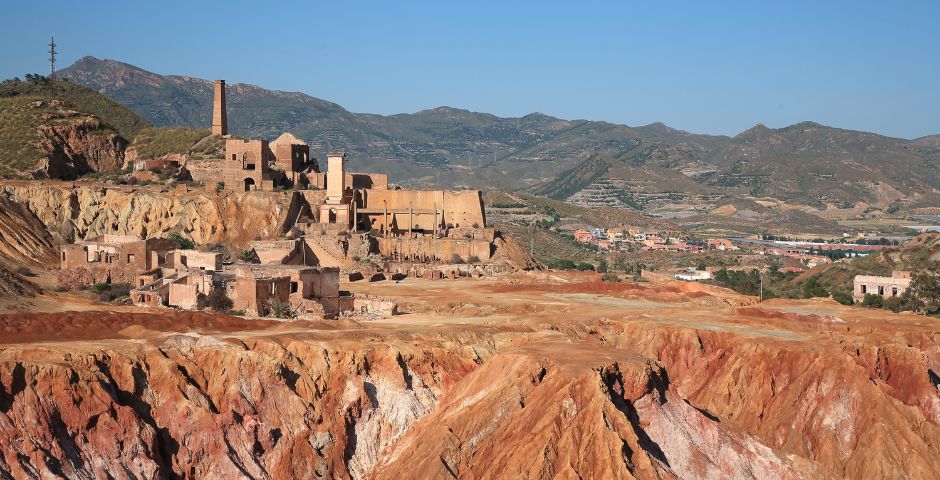The Region of Murcia, located in the southeast of Spain, is a unique and versatile destination for audiovisual productions. Its diversity of landscapes, modern infrastructure, and privileged climate make it an ideal place for filming movies, series, and other audiovisual projects. The Region of Murcia Film Commission has established itself as an essential ally for productions, offering facilities and comprehensive support to ensure the success of every shoot.
The Mar Menor as a key element
One of the major attractions of the Region of Murcia for the audiovisual sector is its diverse landscapes. With over 250 kilometres of coastline along the Mediterranean Sea, the region offers a wide range of natural settings, from beaches and rocky coves to wetlands and salt flats. Inland, there are arid basins, badlands, and mountainous ranges, some reaching heights of up to 2,000 metres. This contrast between European and North African landscapes provides a versatility that few regions can offer.
Murcia also boasts the Mar Menor, the largest saltwater lagoon in Europe, with 180 square kilometres of surface area, in a unique and privileged setting that has attracted international productions. This vast array of possibilities allows film crews to recreate different parts of the world without leaving the region.
Modern infrastructure and accessibility
In terms of infrastructure, the Region of Murcia is well connected to the rest of the country and Europe, facilitating the logistics of productions. The Region of Murcia International Airport, located in Corvera, is only 27 km from the capital and 32 km from Cartagena, a city that also has a port with a Spanish Navy Base, as well as sporting, fishing, and commercial port facilities. These connections, along with an extensive network of motorways and roads linking all the municipalities, provide easy and quick access to any corner of the region.
Murcia is also connected to Madrid via the high-speed rail line, which allows production teams to move efficiently. This accessibility is key for productions that require transporting equipment and personnel quickly, minimising downtime and optimising resources.

Source: Region de Murcia Film Commission
Great works chose this area
The Region of Murcia has been the setting for numerous high-profile international audiovisual productions. Torre Pacheco was turned into a Baghdad neighbourhood for the film “Green Zone”, and the areas around the international airport were transformed into Mexican highways for the famous sci-fi film “Terminator”. This ability to adapt to filming needs has been crucial in attracting directors like Ridley Scott, who chose Murcia to film part of his movie “The Counselor”, using the Mazarrón mines to recreate the surface of Mars.
Another testament to the region’s versatility is its ability to represent different parts of the world. The Los Mateos neighbourhood in Cartagena was transformed into a Mexican village for the movie “Venom”, and the San Javier Airport, near the Mar Menor, was used to recreate Santa Monica Airport in the film “Taken 3”.
Support for audiovisual production
The Region of Murcia Film Commission offers a wide range of services to audiovisual productions that choose the region as their filming location. In addition to facilitating the search for natural and urban settings, the Film Commission collaborates with companies and professionals in the audiovisual sector with extensive experience, capable of working on projects of any scale. This team of experts provides comprehensive advice, including access to tax incentives and financial benefits offered by public administrations.
This kind of support is essential for productions looking to maximise their budgets without compromising quality. From advising on location scouting to handling permits and coordinating with local suppliers, the Film Commission ensures that the entire filming process runs smoothly and efficiently.
Ideal climate all year round
One of the most notable aspects of the Region of Murcia is its semi-arid Mediterranean climate, with over 3,000 hours of sunshine per year. This factor is crucial for audiovisual productions, as it allows filming throughout the year without interruptions due to bad weather. Winters are mild and short, with temperatures around 20°C, and summers are warm and dry, guaranteeing great climate stability ideal for filming.
In summary, the Region of Murcia presents itself as a prime destination for audiovisual productions. Its diverse landscapes, modern infrastructure, extensive experience in major productions, and the comprehensive support of the Film Commission make it an attractive and competitive place for any audiovisual project. With stable weather and optimal conditions for year-round filming, the Region of Murcia is cementing its position as one of the preferred destinations for international productions.

